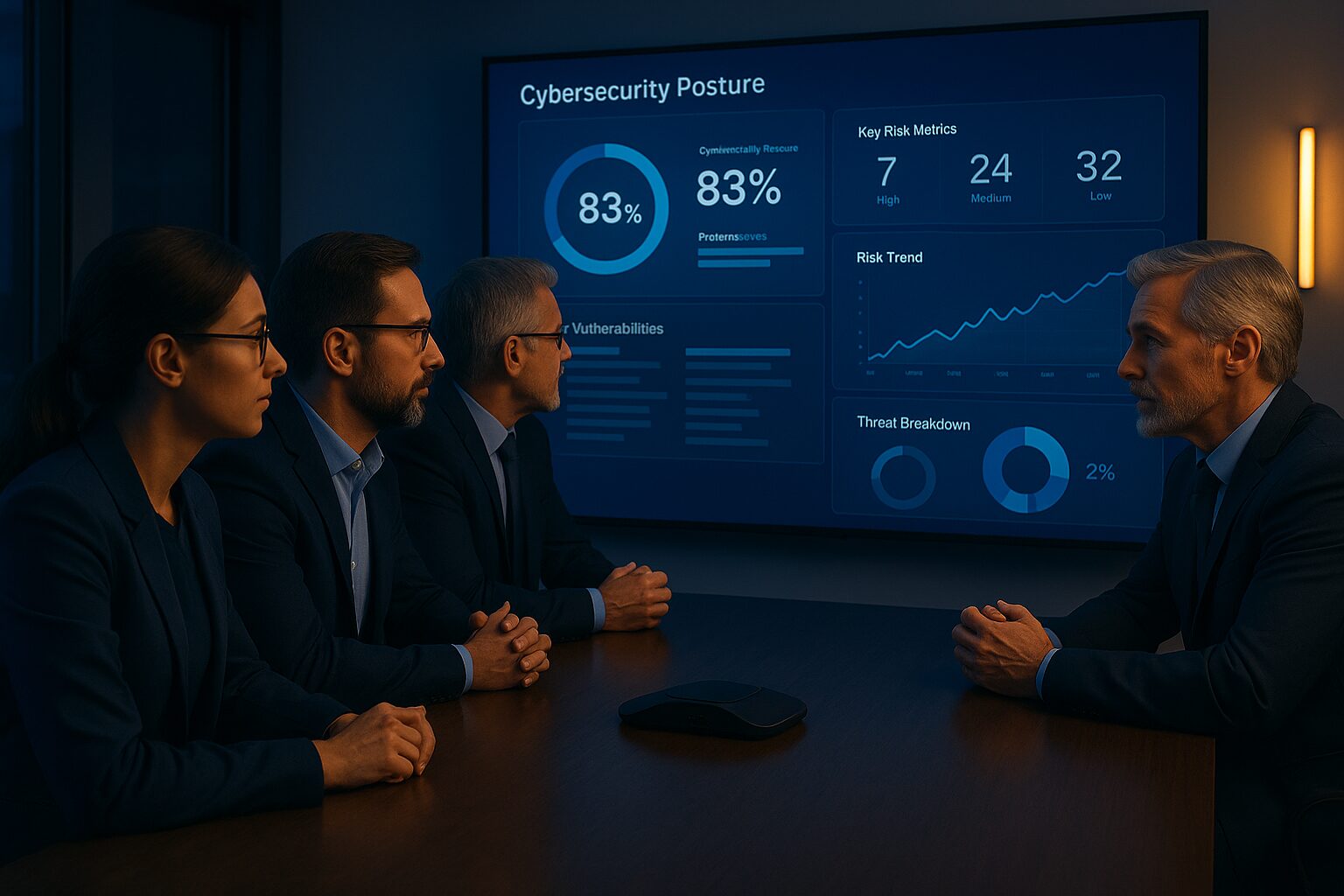While cybercriminals use many tactics to breach a network, these are the top 5 cyber threats facing organizations.
Summary
Whether you are a small business or enterprise, security management is essential to keep your company’s confidential data safe. Understanding the most serious cyber threats to your corporate data and sensitive information can help you to maintain an effective security posture for your organization and its supply chain. These five threats are widely regarded as the most dangerous for companies and individuals:
- Social engineering
- Phishing
- Ransomware
- Mobile security threats
- Identity-based attacks
These cybercrimes can allow criminals to gain access to your company’s data, which can have catastrophic effects on your corporate reputation. In addition, if customer financial information is accessed in a data breach, you may also be facing steep monetary consequences in terms of lost clients and necessary repayments of losses.
Identifying pain points in your data security systems can often allow you to find the best solutions for effectively protecting sensitive data. Working with a company that specializes in customized security services can provide you with insights into your data security pain points and can help you improve your security posture in the modern cybersecurity marketplace.
Key Cybersecurity Pain Points for Modern Businesses
Protecting your company’s data assets from cyberattacks and assessing your vulnerabilities can be a real challenge. Four of the most commonly reported pain points for security management are listed here:
- A lack of knowledge of the most modern tools and technologies can reduce your ability to protect your data effectively.
- Staffing issues and lack of expertise in data security can also impact your company’s ability to prevent data breaches and manage your information security.
- Alert fatigue is a known problem that can leave openings for cyber risks. Constant monitoring of your operating systems and processing events and alerts can reduce the attentiveness of your staff and can sometimes allow cybercriminals to slip through the cracks and go unnoticed.
- Software and hardware vulnerabilities are reported every day and must be addressed promptly to protect your data from falling into the wrong hands.
- Poor security awareness by even one staff member can create openings for data breaches and cyber threats.
Training your staff members about the most common threats to your data security is essential to protect your business from the disastrous results of even a minor data breach. Focusing on these five key areas can help you to plan a workable security strategy for your technological assets.
Social Engineering Attacks
Social engineering attacks use the human instincts of friendliness and helpfulness against members of your staff. By using a plausible pretext, these cyberattack specialists establish a relationship and build trust with your employees. This typically involves assuming a fake identity and using psychological techniques to manipulate staff members into allowing access to key company resources. These may include servers, databases, or information on how these systems work.
Social engineering cyber threats typically require extensive research on the part of the criminal before the approach is made. Most social engineering cyberattacks fall into one of three main categories:
- Baiting usually involves deliberately placing malware-infected flash drives infected with malware (malicious software) or other physical media in areas where staff members are likely to spot it, pick it up, and plug it into their home or work computers. Emails and banner ads may also be used to spread malware to unsuspecting victims who click on malicious links or the ads themselves, installing malware and creating entry points into your company’s data resources.
- Pretexting is the impersonation of another individual, usually someone from inside the company, to elicit information from staff members. Emails purporting to be from officials within the company are among the most common forms of pretexting attacks. Spoofed Caller ID numbers may also be used in larger companies to establish trust and to gain access to company servers and assets.
- Scareware is designed to frighten staff members by making them believe malware is present on their computers. These scareware warnings may come in the form of banner ads or spam emails.
Phishing is also sometimes categorized as a form of social engineering. Since it is so prevalent in the online environment, here is an in-depth look at the tactics and strategies used for these types of cyberattacks.
Phishing Attacks
The FBI defines phishing as a method for gaining access to confidential, financial, or proprietary information. Phishing attacks can occur over the phone, through emails, through text messages, or through the accidental installation of malware on computers. Phishing scams often use spoofing techniques to mask the actual sender of an email, the phone number from which a call comes, or the URL of a website to convince unsuspecting individuals that these communications come from a trusted source. An email from a supervisor, a bank, or a company with which your employees do business can often be disguised to look very much like the real thing. If your staff member is fooled by these cyberattacks, criminals can gain access to financial information, databases, and confidential personal data.
Ransomware Attacks
Considered one of the most serious cyber threats by the Cybersecurity & Infrastructure Security Agency (CISA), ransomware is a type of malware that infects computers and servers to render them inoperable by encrypting data on these systems. The malware typically also includes a demand for payment by the creators of the ransomware, who usually threaten to sell or use the data stolen in this manner if the ransom is not paid.
Even if the company pays, however, the chances are not good that the cybercriminals will release the encryption and restore the use of these services. Avoiding these issues in the first place can prevent serious damage to your company’s reputation and the data stored on corporate servers and computers.
Mobile Security Attacks
Tablets, mobile phones, and laptops are among the most popular targets for malware and data security threats. Smartphones are vulnerable to a wide range of cyberattack types, including the following:
- Open Wi-Fi networks can allow the interception of data transmitted on these networks. This can expose passwords and other confidential information to unauthorized individuals, who may then use the information for criminal activities.
- Spyware programs are typically designed to collect information on locations, texts, emails, and communications that take place near the infected smartphone. Employees who use smartphones, tablets, or laptops to conduct company business should be warned about installing programs that have not been approved for use by your company and your security management team.
- Malware is even more damaging than spyware and can allow full access to information stored on personal or corporate smartphones, tablets, or laptops. While antivirus programs can do some of the heavy lifting in keeping these mobile devices safer, educating your employees about the risks involved in downloading apps is critical to ongoing mobile security.
- A lack of updates can also create vulnerabilities in mobile devices. Ensuring all recommended updates are applied to company laptops, tablets, and phones can close these gaps in your mobile security measures.
- Inadequate password security and lack of multi-factor authentication are frequent culprits for data breaches involving personal devices.
- Failing to maintain good physical security is a leading cause of lost company property and data breaches. Misplaced company laptops, tablets, and phones can be used to access information and pave the way for future cybercrimes.
Identity-Based Attacks
Exploits, credential stuffing tactics, and credential theft are among the most common identity-based attacks. By appropriating the credentials of current and valid users, cybercriminals can often access information that can be used to bypass your information security methods. Exploiting weaknesses in identity authentication can allow unauthorized and malicious access to your company’s data. For example, stuffing generally involves the purchase of login information and its use to access personal or financial data. Both pass-the-hash and man-in-the-middle methods involve the interception of either hashed login information or unencrypted login information by unauthorized parties to a two-way online transaction.
Each of these identity-based attack methods uses information stolen or intercepted to imitate valid logins to your system. Working with top-managed security services providers can provide your business with practical strategies to avoid lasting damage to your company’s reputation and profitability.
Protecting Your Company From Data Breaches and Cybercrime
At Meriplex, we specialize in providing cybersecurity and managed IT services for our clients. Understanding the five most important cyber threats can allow companies to defend their data more successfully against hackers. As one of the top managed security services providers (MSSPs), we can identify your company’s vulnerabilities and help you adopt a security posture that will protect your vital information from the most serious threats in the data security field.
To learn more about current cybersecurity threats and to boost your company’s security awareness, contact Meriplex to touch base with us. We have the experience and the expertise you need to keep your systems secure. If you need an MSSP to help you boost security awareness or to assist you in mitigating cyber risks, Meriplex is here to help you protect your data and your reputation with advanced security services tailored to your company’s specific set of needs.



